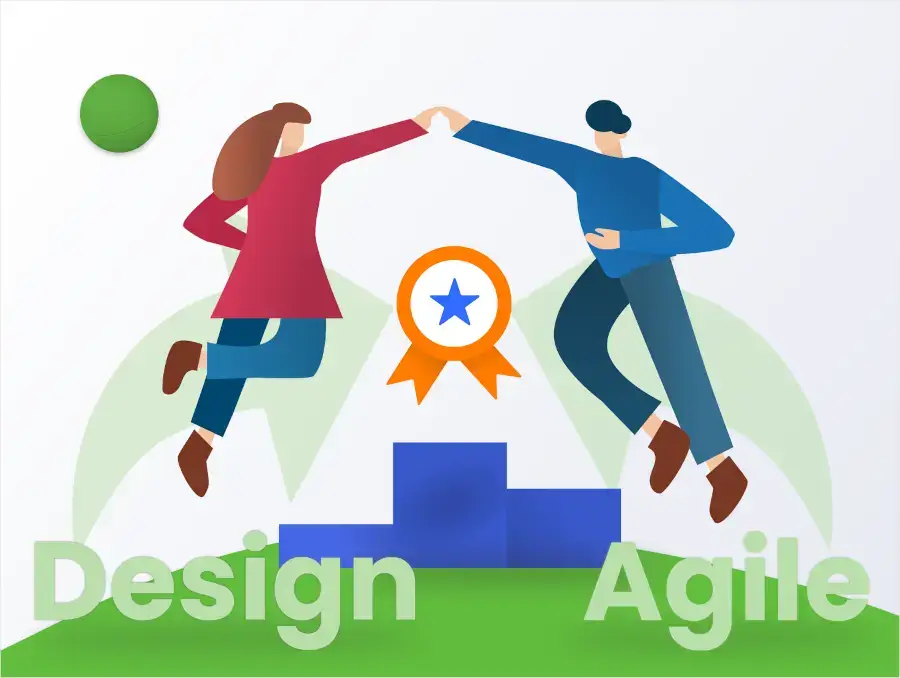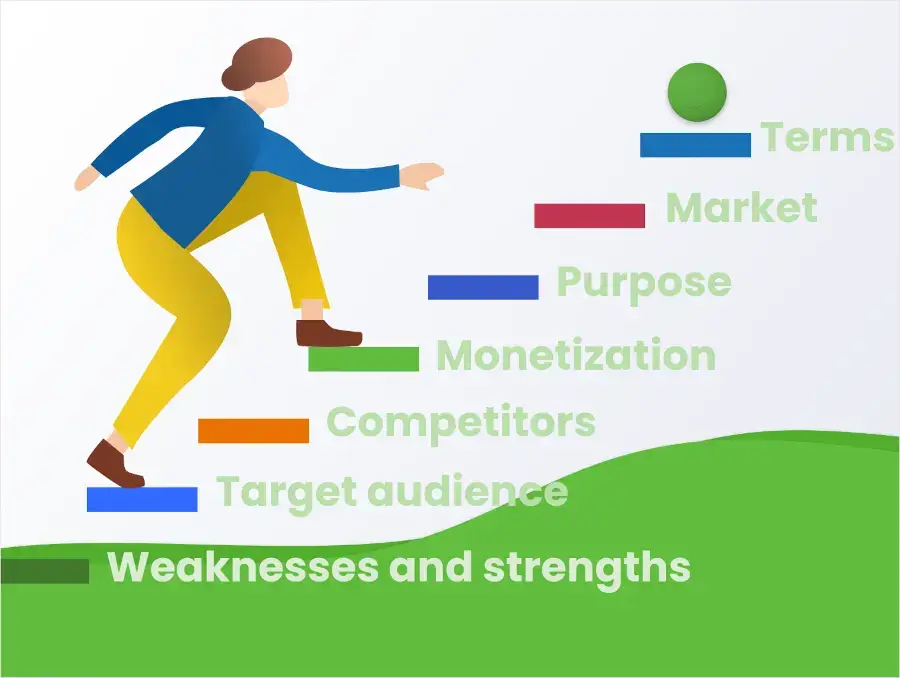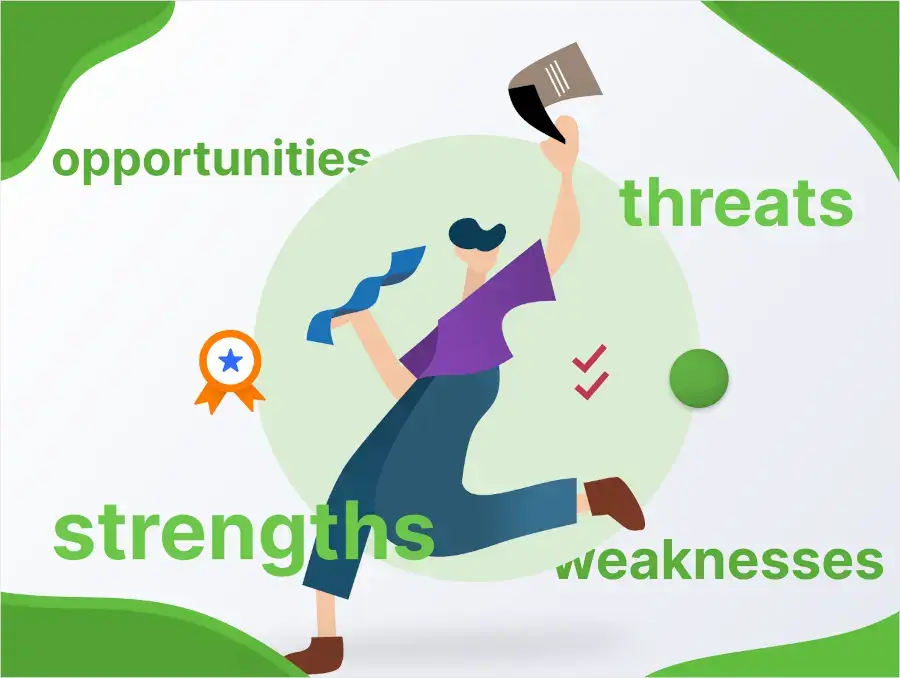How to use analytical approach and calculate every step during website development
What do we mean by design? In general, this is the first step in the development of any large project, the basis of its success. When we build a skyscraper, we need to think about everything: the appearance of the building, the number of floors, the location inside, the materials used. Add to that earthquake resistance, sustainability, offices and shops. Seems like a daunting task, doesn't it?
But in fact, design can solve all these problems. And the construction is a guarantee of the quality of the future building, that it will not collapse and bury people under the rubble.
If we go from theory to practice, there are several design methods. One of the most popular is Agile, according to which the project is divided into short cycles (iterations), at the end of each of which the customer receives a certain product. The stages may not go sequentially but happen in parallel or in a different order.
"But you can't build a skyscraper like that!" you might say. First, a construction project is drawn up, otherwise, it can lead to consequences. We can't disagree - Agile is not a magic wand that solves all problems. No IT company uses this method in its pure form but optimizes it for its needs.
Therefore, design is NOT against Agile.
The vast majority of large projects are executed in Agile, but not classical. Instead of starting everything at the same time, including design and programming, we use a more efficient solution: developing a framework (analysis stage, usually 1-2 weeks) to see the whole project, and then sit down to develop the first interfaces while the programmers think about the architecture, choose technologies and write the core of the system.
That is, in the first iteration of Agile we will have a bare design, its analytical part, and already from the second (in 1-2 weeks) we can start programming, and in another 2 weeks, when the first interface will be available, we can connect designers, etc.
Convinced? I think not all. There are often people (most often programmers without an entrepreneurial outlook) who say that it is unreasonably expensive.
Imagine that we decided to start at the same time. They appointed a programmer, he started doing something. The designer was sat down, shown a description on several pages, and told to "draw". A programmer thinks technically: what language to choose, what architecture to lay down, how the database will be arranged. The designer thinks creatively: what style to choose, what colors to place, where to place which block.
As a result, we will have a beautiful picture from the designer and the correct code from the programmer, but it will not work to achieve the final goal. In other words, design is a mandatory step in the development of any large site.
All over the world, there are two approaches to design:
- Mobile first - when we start designing with the mobile version and then the full-featured version.
- Desktop first - when we start developing a full-featured version, and then make a simplified one for mobile devices. This option is more acceptable around the world, although Mobile first has been actively developing recently.
Define initial requirements with thought about your target audience in mind
First, define the requirements for the project. The problem is that the first requirements take many different forms, from a simple one-page description of an idea to a dynamic prototype.
So, to understand the big picture, you need to ask the right questions:
Purpose. Any business should have a goal and criteria for success. Investors have a very cool trick, they ask to formulate the idea of the project in one sentence. If the startup can do it, they talk to it further, if it can't, the idea is too raw and needs to be refined.
Target audience. Any entrepreneur or manager should know exactly who will use the project. You need to understand who will use it, who will pay, who is important to the project and so on. Ideally, back up your assumptions with research.
Market. Not to be confused with the target audience. It can be a market limited by the geography of a specific country, language, subject, etc. Ideally, you need to know not only the boundaries of the market, but also its features and rules, if any.
Competitors. You need to know them much deeper than just the name, and generally their presence on the market. This can prevent many problems in the future that have already been solved by your competitors, directly or indirectly.

Monetization. If you do not know how to make money from your idea, then it will not bring money - this is the law of business and one of the main reasons for the death of startups. There are rare cases when the project is not created for earning, and monetization tools are not needed there a priori.
Weaknesses and strengths. Strengths and weaknesses will help you understand what to focus your attention on when creating a product, promoting it and selling it.
Terms. If the idea is innovative, and something new is being done that does not exist anywhere else in the world or in a specific market, the moment will be critical, you need to do it as soon as possible to occupy a niche. If we do something standard, like, for example, an online store, then it is done for a real business that has a clear plan. In any case, even though we will be doing an Agile project and the deadlines are vague, we need to know the time frames and milestones.
Write down project goals you want to achieve
All project goals can be divided into global (money, users, actions, attention, market share) and local. To achieve each global goal, many small local goals must be achieved. And there are usually many well-thought-out mechanisms for doing this. But everything depends on the implementation and achievement of some results.
We recommend that you think through in detail and draw up a document with global goals that can be divided into local ones and with success criteria, by which you will understand that you have achieved the goal.
Target audience map for a website
If you have neither the resources nor the time to conduct full-fledged marketing research, then you can determine the audience using this method.
To begin with, the entire target audience must be divided into groups based on goals and main characteristics. For example, if we do a photo project, our target audience can be: professional photographers, amateur photographers, customers of photo services, models, etc. In our experience, in large projects, such groups are usually up to 10, and they should reflect the goals for 98% of the users of the future site. In this case, one of the groups will be the main one, it will include the largest percentage of users of the future project, and it is worth paying special attention to it.
And do not forget about the internal audience: everyone who will serve your site and for whom you need to develop an admin panel. A huge piece of work that most people don't even think about, but which in some projects is even more difficult than an external site. After the name of the group, you need to give them a description. Don't know how? Develop questions and ask them to the audience (20-30 people).
Divide the answers into 4 categories:
- socio-demographic characteristics: gender, age, education, income level, profession, etc. The behavior will depend on each of these factors, so the better this stage is carried out, the easier it is to predict the actions of the target audience, and then optimize the site for them.
- psychographic characteristics: lifestyle, life position, value system, etc. The value system of students will clearly differ from the value system of politicians or businessmen.
- behavioral characteristics: the reasons for registration, benefits sought, frequency of visiting competitors, etc.
- geographic characteristics: country, city, region. Users from the US will clearly differ from users from Thailand, and differ in almost everything.
Characters and Empathy Map
We have already said that it is important to predict the actions of the target audience. We will be helped in this by a character-representative for each of the target groups of the audience, who will collect all the typical characteristics. So, it will be easier for the designer to put himself in the place of the client and think through the project from his point of view.
Example description:
- Full name
- Photo
- Age
- Country and city
- Occupation
- Marital status
- Behavioral features
The most important thing after the portrait is the tasks-problems-solutions of each such user.
After developing the characters, you can proceed to the empathy cards, they can be made for each character separately. This allows you to understand the target audience even more deeply, and to specifically look at the problem through the eyes of users.
You should not think that this is the same as a character portrait: the characters show all the tasks and ways to solve them, and the empathy map will help you find the most important things for users, reveal their main behavior patterns and place accents in the design. The essence of the empathy map is to divide the user's attitude into 4 blocks:
- I think and feel.
- I speak and do.
- I see.
- I hear.
Then analyze them and draw conclusions in two planes:
- Problems and pain points.
- Values and achievements.
This tool is useful not only in design, but also in marketing.
!RESULT: a document with several characters, and each of them has its own empathy map. Also, after this stage, there should be many ideas for further design.
Global market
Usually the product owner is aware of the general trends, or he would have started the project. But here it is important to study the situation today and find forecasts of market growth. There are three situations in the market:
- The market is falling. We do not recommend starting the project at this stage, with rare exceptions.
- The market is stagnating. In such a situation, usually all free niches are occupied and it will be difficult to get in.
- The market is growing. The most profitable situation and a higher probability of breaking the jackpot.
- The project creates a market. That is, the owner of the product invented something completely new, which does not exist in the world. This is the most difficult option and the riskiest, but with the possibility of obtaining the highest profit.
How to describe the market? There are three main parameters:
- Goods (consumer properties, groups of goods, substitutes, prices, the volume of supply, etc.)
- Geography (countries, cities).
- Time (seasonality, permanent or temporary).
WARNING! Often the online market competes with the offline market. For example, online and offline loans. In this case, market parameters will differ only in the first and second categories: by products and geography. The product will differ in that the online loan is faster, more convenient, has a different interest rate, etc. By geography: we are not tied to a branch of a credit organization, so anyone can get such loans in any part of the country.
Analyze your competitors, their advantages and weaknesses
After researching the market, you need to research your competitors (if you have them). Ideally, we should come up with a unique "chip" that will distinguish us from our competitors, and first of all, we need to know every cell of each competitor.
How to analyze competitors? First, you need to compile a list of competitors, divide it into direct and indirect (substitute projects for the target audience).
We usually ask recognized market experts, Google keywords, look for ratings, subject guides, etc. If our market is geographically limited, it helps a lot to study similar projects in the west and neighboring countries. These projects are not our competitors, but can be a source of useful ideas.
- We recommend analyzing direct competitors using a SWOT analysis: make a table with a description of strengths, weaknesses, opportunities and threats. We can play on weaknesses and threats, they must be significantly better than those of competitors.

The results of this analysis will influence both design and marketing. It will allow you to understand exactly what to pay attention to in the design, and will help generate many useful ideas.
- There is another great way - competitive intelligence. When we, under the guise of a client, go to our competitors and receive a lot of interesting information.
- Also, it is worth making a table comparing the functionality of direct competitors: write out all the typical functions of competitors in one table, evaluate them, and note who performs which function. At the end, display the total number of points to understand which of the competitors is the most developed.
Here you can also apply the principle of "smart borrowing" and copy some functions from competitors, if they are really required in our project. But the unique functionality is usually not copied, this is where the project should differ, because our task is not to make a clone, but to make the competitor an order of magnitude better than the already working project.
Why is this important? The most common reason for the death of startups is the lack of market demand (42%). That is, we need all this not for beautiful pictures that can be shown to investors, but for guaranteed business success.
!RESULT: a short document with a description of the market and a comparison of competitors.
Tasks-Problems-Solutions
Each person has his own needs (tasks), when solving them each of us usually faces certain difficulties (problems). The goal of the designer is to come up with such mechanics (solutions) that can solve the tasks and problems of users.
Let's consider an example: the client wants to buy a new car (task), but does not know which one to choose (problem). The one who helps him choose will help create a solution. Therefore, the main thing for a business at this stage is to solve the tasks and problems of customers, providing it with a profitable solution.
This stage will depend on how well you made the description of the characters and the empathy map. For each you need to write Tasks-Problems-Solutions. There may be too many ideas. How to choose the best? The Empathy Map will help us answer this question.
!RESULT: a large table with 3 columns, all tied to specific characters. The largest of them will be the column of decisions. These will be the main functions of our future project.
Customer development
A business that does not generate income is not a business. Therefore, it is necessary to take care of the monetization of the project. There are several common monetization models:
- Advertising - showing ads to users, the main functions are free for them. For example, contextual advertising in Google.
- Subscription - paid subscription to premium functionality or just access. For example, paid programs in the App Store.
- Freemium - the main functionality is free, and the rest is paid for. For example, a VIP profile on dating sites.
- Platform - the project acts as a platform on which people (companies) pay each other something, and the project takes a percentage from it. For example, freelancer sites that take a percentage of deals.
- Services - one-time or permanent payment for some services. For example, for opening some information or an opportunity to stand out.
- Real goods - sale of goods of the real world, classic e-commerce. For example, any online store.
- Virtual goods - sale of virtual goods. For example, selling virtual goods in games.
Each of these models can be combined with others.
In addition to popular models, there are quite special ones. For example, it is possible to collect and sell users' personal information for advertising purposes, which many in the US do today.
Separately, it is worth considering how much customers will be willing to pay for what we offer. How to find out how much more our customers earn with us?
- Make a calculation.
- Ask customers.
- Make a comparison of competitors.
!RESULT: a document in which monetization models will be selected, their mechanics of work, implementation terms, as well as the calculation of efficiency and break-even will be described.
Mind Map
At this stage, it is best to visualize the ideas in one big mind map, where nesting and connections will be visible. The main principles are detailing and brevity.
You take each decision, for example, "Online payment", and write options for such payment (Bank card, PayPal, etc.). This solves the problem that some points are often forgotten when starting to work with interfaces. Therefore, everything should be displayed on the map, even if it has to be divided into several.
All previous stages and the map itself do not take much time. This is the zero iteration in the project, after which you can start programming while the designer works on the first interfaces. A small price to pay to lay the right foundation and not have to redo it later.
!RESULT: one Mind map or several for different parts of the project, stages of implementation of functions and priorities.
Site structure
The next step is to choose the structure of the site. Here we suggest using the Miller Wallet: add no more than 5-7 items to one block. The same goes for the main menu. But there is an exception, if all menu items carry the same semantic load, then more are possible. Here are some additional tips:
- Sections of the site should be simple, clear and each should benefit our users. Therefore, a separate Mind map is usually made for the structure, in which we display only the pages and sections of the future site.
- Do not exceed 3 nesting levels. IN
- Do not forget about the possibility to display the personal account menu for different roles or other sections hidden from all users.
!RESULT: a complete site structure and an understanding of the main and secondary menus. It will form the basis of the first interface.
This concludes the Analytics section. We hope that the article was useful for you and opened the curtain a little on what happens from the creation of an idea to the beginning of building the structure of the site.

